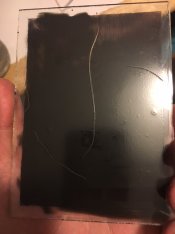Well, that's disappointing. This is good stuff!
I don't know what your longer term plans are, but I'm ready to support your Kickstarter...
Haha, thanks! I'll find a place to show off here periodically -- I just didn't want to clutter a somewhat information-heavy thread with random pictures.
I'm not sure about the long term either. In the coming weeks I'd like to put together a guide in the same manner I did with daguerreotypes and Lippmann plates. Just a collection of everything I've figured out so far, so that other adventurous types can try it themselves. I'd like to make a companion video for it too, just showing off the process from start to finish...
I'm thinking of selling plates in limited batches in the coming months, too. I'd have to start real slow, and they'd be pricey, since I can only make a couple per day with my job and all. But on the plus side, the screens are reusable and coating is one of the easier parts anyway. I've got a programming/automation background, so I've been brainstorming a way to automate the starch pressing... We'll see how that goes before I even think about crowdfunding XD
I'm fascinated to see your progress. As far as I know, this is the closest anyone has come to recreating Autochromes.
Thanks!
Frédéric Mocellin's work has always served as inspiration for me, but I think mine might be slightly more closer to the original plate's design. Not that it's a competition or anything... I'm looking forward to making many more! If only the sun would come out...









